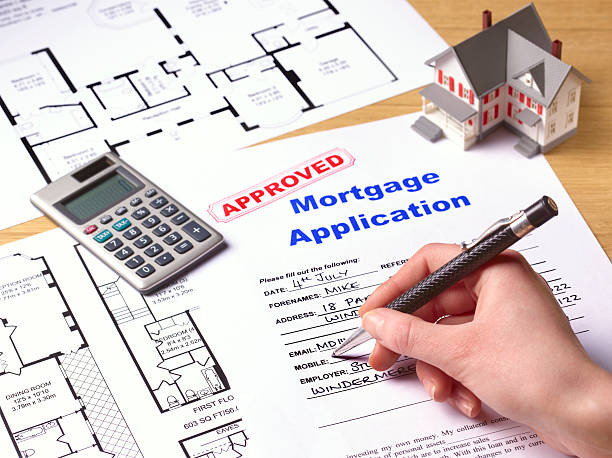If you are searching for how to get a mortgage, you are in the right place!
Securing a mortgage is a significant milestone in the journey toward homeownership, and understanding the intricate steps involved can greatly simplify the process.
Whether you’re a first-time homebuyer or looking to upgrade your living space, navigating the world of mortgages requires careful planning, research, and informed decision-making.
This article will walk you through the essential steps and considerations on how to get a mortgage, ensuring that you’re well-prepared to make one of the most important financial commitments of your life.
Also Read:
Why Did My Mortgage Go Up? (Find Out Now)
What Is a Reverse Mortgage? (All You Should Know)
How to Get a Mortgage
Getting a mortgage is a significant financial decision that involves securing a loan to purchase a home.
The process can be complex, but breaking it down into key steps can make it more manageable.
Here’s how to get a mortgage:
1. Assess Your Financial Situation
Before applying for a mortgage, it’s crucial to evaluate your financial health. Determine your current income, expenses, and debts.
Calculate your debt-to-income ratio (DTI), which is a measure of how much of your income goes toward debt payments.
Lenders typically prefer a DTI of around 43% or lower.
2. Check Your Credit Score
Your credit score plays a significant role in the mortgage approval process. Lenders use your credit score to assess your creditworthiness.
A higher credit score can help you secure better interest rates and loan terms.
Obtain a copy of your credit report and correct any errors before applying.
3. Determine Your Budget
Use a mortgage calculator to estimate how much you can afford to borrow.
Consider your down payment, monthly expenses, property taxes, insurance, and potential homeowners’ association (HOA) fees.
Your monthly mortgage payment shouldn’t exceed 25-30% of your monthly income.
4. Research Mortgage Types
There are various types of mortgages available, including fixed-rate, adjustable-rate, FHA loans, VA loans, and more.
Each type has its pros and cons, so research thoroughly to find the one that suits your financial goals and risk tolerance.
5. Shop for Lenders
Research and compare different lenders, such as banks, credit unions, and online mortgage lenders.
Obtain pre-approval or pre-qualification from multiple lenders to understand the loan amount you’re eligible for and to compare interest rates and fees.
6. Gather Documentation
Lenders require extensive documentation to assess your financial stability.
This may include pay stubs, tax returns, bank statements, proof of assets, and any other relevant financial documents.
Having these ready can expedite the application process.
7. Apply for the Mortgage
Submit a formal mortgage application with your chosen lender.
They will review your financial information, credit score, and other documentation.
This step may involve paying an application fee.
8. Underwriting Process
Once your application is submitted, the lender’s underwriting team will review your application and documentation in detail.
They assess your financial stability, creditworthiness, and the property’s value.
This process can take several weeks, and the lender might request additional documents or clarification.
9. Home Appraisal
The lender will order an appraisal to determine the fair market value of the property.
This ensures that the property’s value aligns with the loan amount and reduces the lender’s risk.
10. Mortgage Approval
If the underwriting process is successful and the property appraisal meets the lender’s requirements, you’ll receive mortgage approval.
The lender will provide a Loan Estimate (LE) detailing the terms, interest rate, closing costs, and monthly payments.
11. Choose a Rate Lock
If you’re satisfied with the terms, you can lock in the interest rate.
This protects you from rate fluctuations during the closing process.
12. Closing Disclosure and Closing
Before closing, the lender will provide a Closing Disclosure (CD) that outlines the final terms and costs of the loan. Review it carefully to ensure accuracy.
At the closing, you’ll sign the loan documents and pay the closing costs, including the down payment.
13. Repayment and Management
After closing, make your monthly mortgage payments as scheduled.
Consider setting up automatic payments to avoid missing payments.
Stay informed about changes in interest rates and opportunities to refinance if it can benefit your financial situation.
Getting a mortgage involves careful planning, research, and financial assessment.
Working with a knowledgeable mortgage broker or loan officer can also simplify the process and ensure you make informed decisions.
Remember that each individual’s situation is unique, so tailor these steps to your specific needs and goals.
Also Read:
How Much Mortgage Can I Qualify For?
How to Calculate Mortgage Payment (Step By Step)
Conclusion
Securing a mortgage involves thorough financial evaluation, credit score awareness, and diligent research of mortgage types and lenders.
The process encompasses documentation, application, underwriting, property appraisal, and approval.
A careful review of terms, rate locking, and a smooth closing are pivotal.
Post-closure, responsible repayment, and staying attuned to financial opportunities remain essential.
A well-informed approach and collaboration with experts can lead to a successful mortgage acquisition, enabling the realization of homeownership goals.













